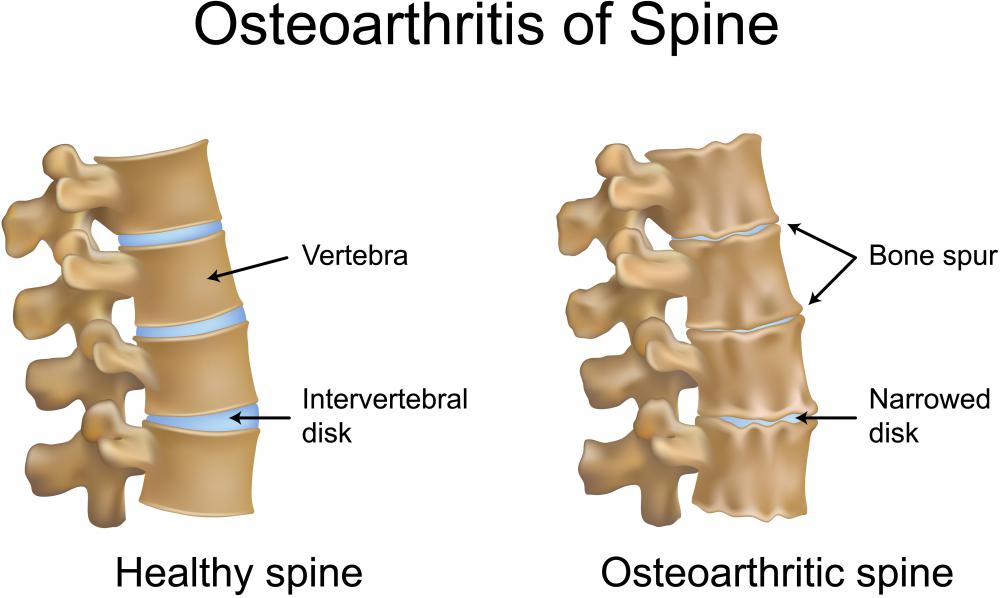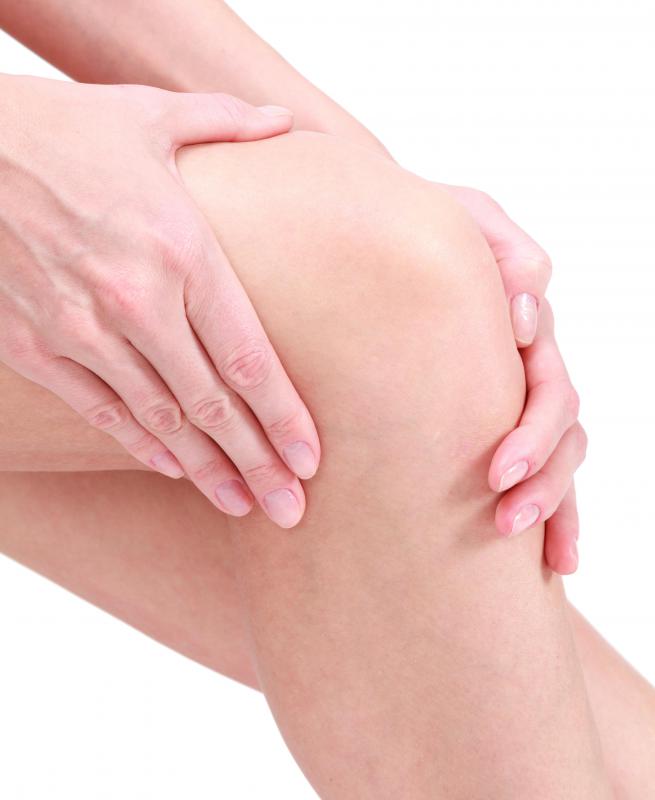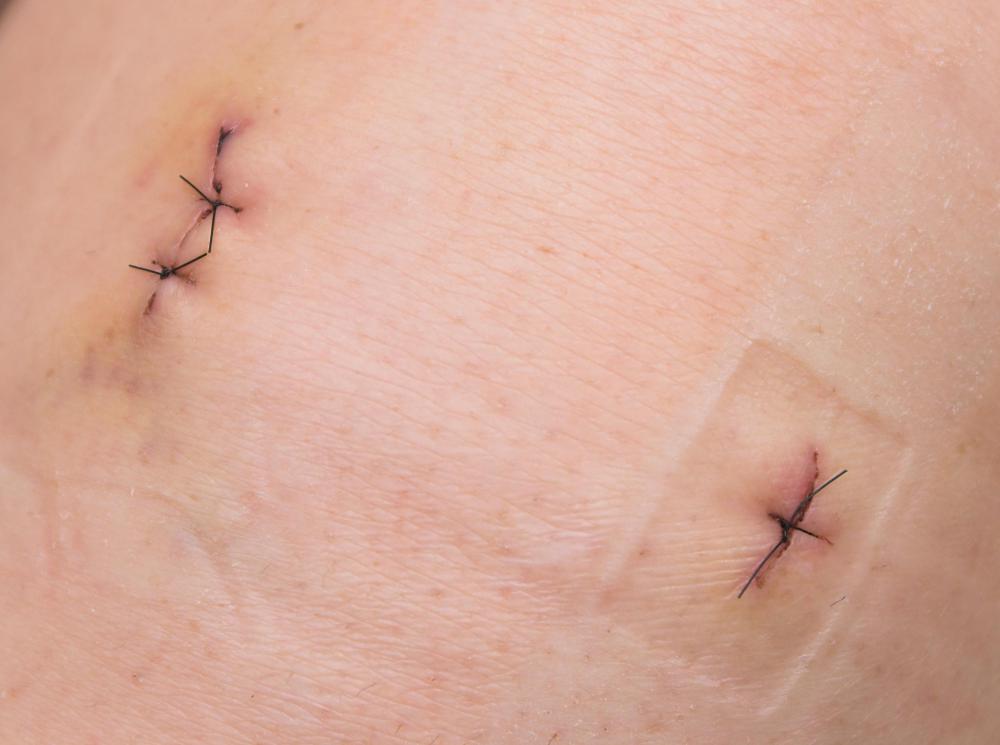At WiseGEEK, we're committed to delivering accurate, trustworthy information. Our expert-authored content is rigorously fact-checked and sourced from credible authorities. Discover how we uphold the highest standards in providing you with reliable knowledge.
What can I Expect During Bone Spur Removal?
Bone spur removal surgery is commonly done with small scopes and instruments that are minimally invasive and allow for a faster recovery. A local anesthetic is used on the joint where spurs exist, and the area will be positioned for easy access by the surgeon. One small incision is made for a camera, while other slits allow insertion of instruments for removing a bone spur. Medical tape or a couple of stitches close the wounds, and the patient usually goes home after a few hours of rest.
Arthroscopic bone spur removal typically takes between 30 minutes and two hours, depending on the location of the surgery and the size of the spurs. Sometimes a tourniquet is applied near the joint to reduce blood flow during the removal so the surgeon has a better view of the area. A liquid solution injected into the joint area is an alternative method of keeping blood from the surgery site.

Bone spurs, called osteophytes, consist of an abnormal growth of bone anywhere on the body. The condition is more common at joints where ligaments and tendons attach to bone, and in the spinal region. It can be caused by arthritis, calcification of tendons or ligaments, or injury to the bone. Some people have bone spurs for years without any symptoms, but the condition becomes painful when the bone rubs against nerves or adjacent bones.

Osteoarthritis is a progressive joint disease that usually affects the hip, knee, ankle, or elbow. As cartilage in a joint gets worn down, it erodes the cushion between bones, resulting in pain when the ends of bones rub together. The body fights the condition by growing new bone on the sides of the affected bones. Bone spur removal is commonly done on these areas in conjunction with joint replacement.

When an injury occurs in a joint, the body might produce extra calcium during the healing process. This extra calcium might lead to bone spurs that affect movement in the joint and cause pain. If medication for pain and inflammation is not effective, surgery might be needed for bone spur removal.
After surgery, a patient is commonly advised to rest, elevate the joint, and apply ice for a few days. A compression bandage might be helpful to reduce any swelling from the operation. Some patients use crutches, splints, or a sling during the healing process. Surgeons commonly recommend exercises to strengthen muscles after bone spur removal surgery.
AS FEATURED ON:
AS FEATURED ON:


















Discussion Comments
My sister has a bone spur on her heel and it gives her a lot of trouble. I don't know whether she would be a candidate for surgery or not. I'd like to hear from other people who have had bone spurs removed to see if they got much relief.
Still, as much as it sometimes hurts her to walk, any improvement would probably be welcome. She hasn't found too many shoes that take the pressure off her heels that allow her to walk comfortably all the time, which is not good. She has insurance, so maybe she can get this taken care of before it gets much worse.
Post your comments